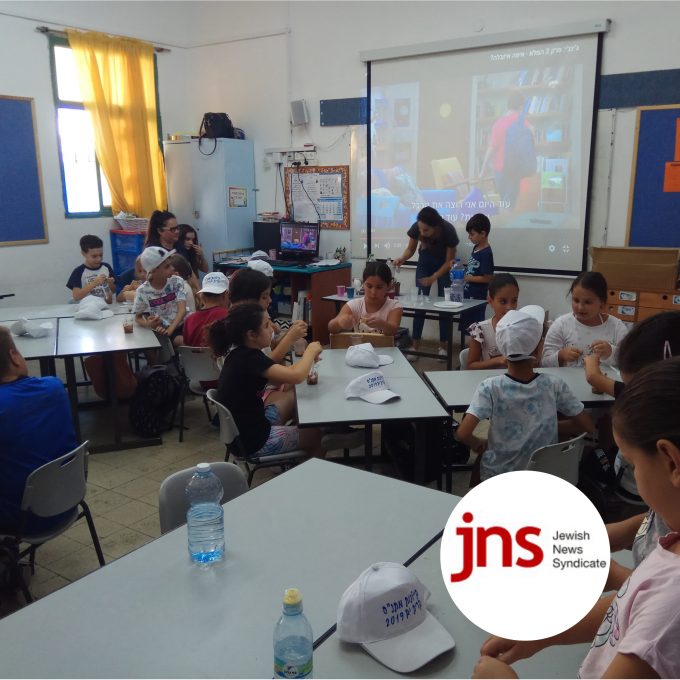World ORT and ORT Russia have been given the task of designing a massive new school to serve the population of the Skolkovo Innovation Centre “モ Russia’s answer to Silicon Valley.
After beating a field of 200 domestic and international competitors for the multi-million-dollar tender, ORT has initiated a consortium of companies and organisations which were similarly shortlisted by the Skolkovo Foundation, the agency responsible for the Innovation Centre.
The idea is to create a “smart school”?, similar to the concept which World ORT is developing in Israel where two client schools have been earmarked for the necessary radical overhaul to enable them to use technology to create an individualised and collaborative learning environment with more opportunities for cross-curricular integration and improved content development and delivery. World ORT Chief Program Officer Vladimir Dribinskiy said ORT’s selection was the icing on the cake of the 20 th anniversary since its return to Russia, the country where it was founded in 1880 and from which it was expelled during the Stalinist era.
“That we are a driving force of the consortium which won the tender for such a prestigious project is a great achievement in and of itself,”? Mr Dribinskiy said. “I am very proud that we are in this position after 20 years of developing ORT’s operations in Russia; I can’t imagine better recognition of our contribution and achievements.”?
ORT and fellow consortium members, the Moscow Institute of Open Education, the Federal Institute of Educational Development, and the Technology for Learning Educational Centre, British company Lookred and American firm Global Lab, have common values sharing a vision of a technologically-based “transparent”? school which would embrace the community it serves.
Currently, that community is little more than a village. However, the Government reportedly expects 40,000 people to live and work in what it wants to be an ultra-modern “Innovation City”? built on 900 acres 20km west of Moscow “モ an ecosystem to encourage scientific and technology-based companies.
Since the Government launched the Skolkovo Innovation Centre project in 2009, more than 200 companies have been attracted to the idea of setting up a presence there “モ including research and development centres currently under construction for IBM, Siemens, Ericsson and Nokia “モ to develop new space and telecom products, innovative medical equipment, biotech, clean and efficient energy products, nuclear technologies and information technology. Skolkovo itself is intended to become a “city laboratory”? where locally-developed innovations will be introduced and approved.
The planned school complex, with 2,000 students aged between six and 18, will be an integral component of the overall development of the high-tech hub at Skolkovo, with many of its alumni going on to study at the planned Skolkovo Institute of Science and Technology. The Institute, believed to be the first such institute in the world to integrate comprehensively education, research, innovation and entrepreneurship, announced last month that its first president will be Massachusetts Institute of Technology (MIT) professor Edward Crawley, a specialist in space exploration.
Gregory Vodopyan, Deputy Principal of the ORT Gunzburg School in St Petersburg, said: “It will be a comprehensive school for local, working class children and for the children of the transient white collar population of high tech workers, businesspeople and academics who will be drawn to the area. ORT will be responsible for designing information systems, teacher training, designing the technology curriculum and experimental work with new learning methods and teaching materials.”?
World ORT’s global reach means that international experience can be brought to bear on the project. However, it is the individualised learning concept which stands to make the Skolkovo school radically different from most of its contemporaries.
“The traditional class has one teacher and many students, all of whom are sitting in rows “モ like an officer with rank and file soldiers,”? said Mr Vodopyan. “The teacher is the centre of the learning process. We want to implement a student-centred model where a teacher, assisted by tutors, will educate students sitting together in groups allocated according to learning performance.”?
The extensive use of technology means students can work together in small groups on individualised study tracks and enables teachers to become closer to each pupil “モ similar to ORT Argentina’s experience.
Mr Dribinskiy said: “Delivering educational content through Web 2.0 has enabled a more individualised focus on each student’s needs and takes into account immediate responses and interaction with students and their families. It’s an example of technology making individualisation of teaching more efficient and helpful.”?





